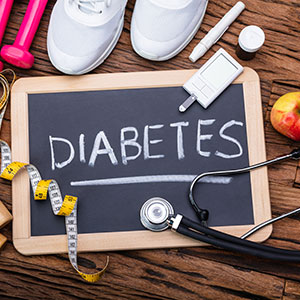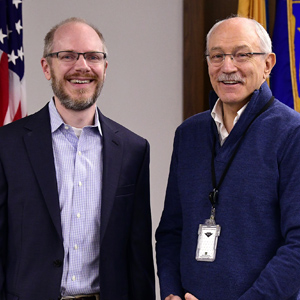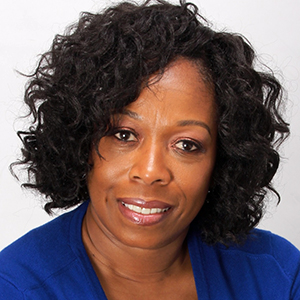NIEHS biologist Stella Sieber was among the first to receive a new award from the National Institutes of Health (NIH) to honor Champions and Allies of Disability. The award, sponsored by the NIH Office of Equity, Diversity, and Inclusion (EDI), was presented to Sieber at an Oct. 24 ceremony, in recognition of her countless contributions as an advocate for the limb loss and limb difference (LL-LD) community.
“Part of me still wonders how I got selected for this award,” Sieber said, with a laugh. “This is such an incredible honor. I can’t tell you what it means to me to represent our segment of the disabled community in this way.”
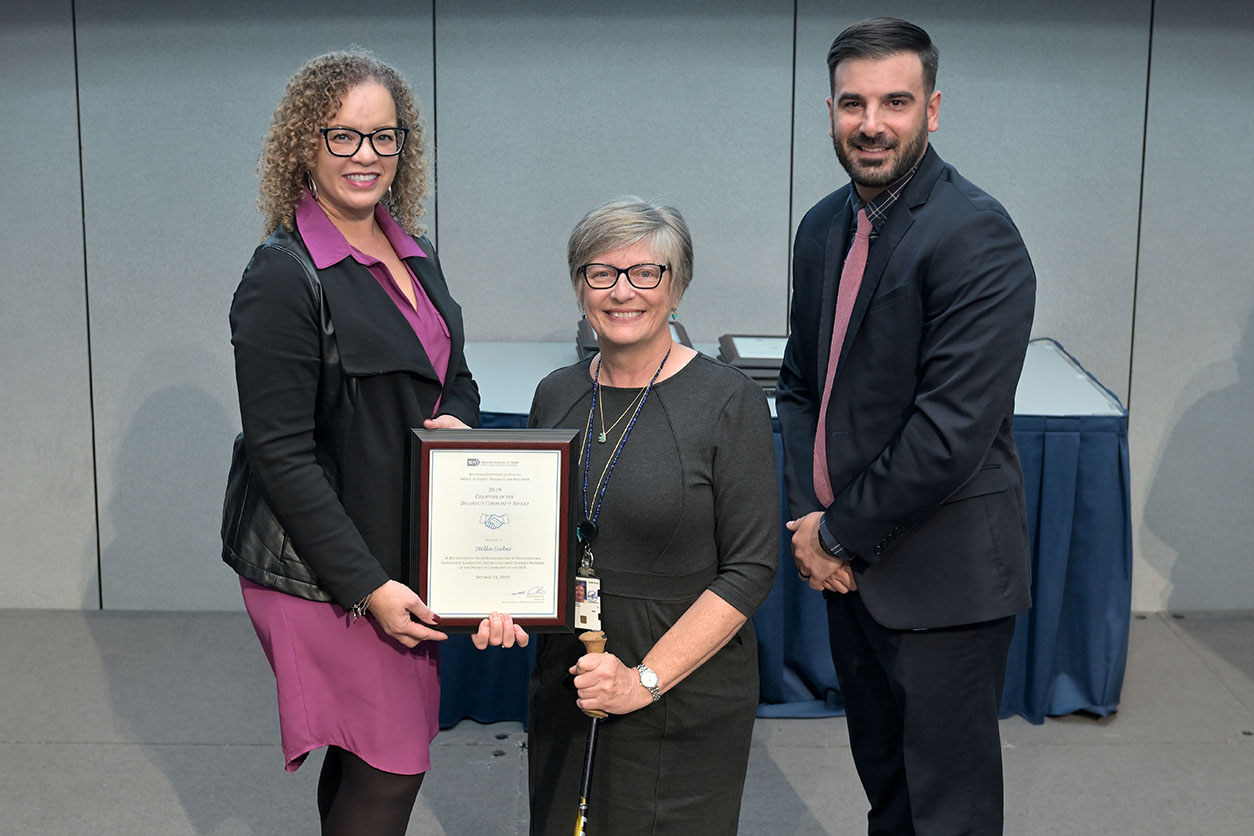 EDI Director Debra Chew, J.D., left, congratulated Sieber on her selection. David Rice, right, emceed the ceremony. Rice is the EDI principal strategist for people with disabilities. (Photo courtesy of NIH)
EDI Director Debra Chew, J.D., left, congratulated Sieber on her selection. David Rice, right, emceed the ceremony. Rice is the EDI principal strategist for people with disabilities. (Photo courtesy of NIH)Stella’s story
On July 29, 2001, Sieber was returning home to North Carolina from Washington, D.C., when she stopped on the roadside to assist a vehicle that had hydroplaned and flipped onto its top. As she was standing behind her vehicle, another driver struck the back of her car, pinning Sieber between the two cars.
“The immediate result of the crash was that I became a bilateral above-the-knee amputee,” Sieber recalled. “I also sustained several spinal fractures and two broken femurs due to the force of the impact.”
Sieber required two major surgeries in immediate response to the accident. After that, she spent two weeks as a hospital inpatient then another two in inpatient rehab. Sieber spent the next several months working to regain her strength through physical therapy. Eventually, she learned to walk again using prosthetic legs and later adapted to being shorter in height.
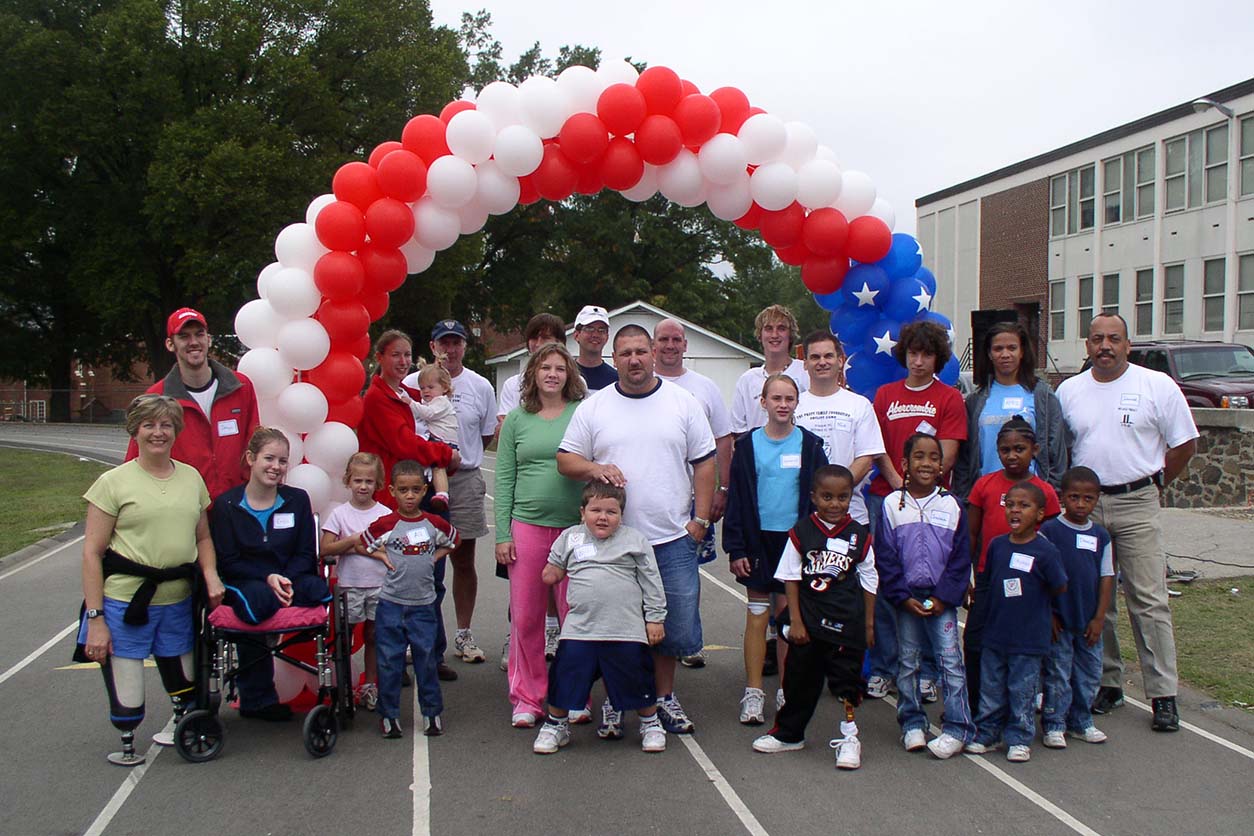 Sieber, far left, at an athletic event, is an Amputee Coalition-certified peer visitor trainer and a Promoting Amputee Life Skills trainer at Johns Hopkins Center for Injury Research and Policy. (Photo courtesy of Stella Sieber)
Sieber, far left, at an athletic event, is an Amputee Coalition-certified peer visitor trainer and a Promoting Amputee Life Skills trainer at Johns Hopkins Center for Injury Research and Policy. (Photo courtesy of Stella Sieber)“One of the biggest things that amazed me about the rehab process was just how quickly one loses muscle tone versus the length of time it takes to regain that strength,” Sieber said, noting her eight-week recovery time for roughly three weeks of inactivity.
“That type of work requires patience and flexibility of expectations, while celebrating every small victory,” she said. “Otherwise, it’s easy to lose sight of the progress one is making.”
From tragedy to triumph
 Sieber has received three Director’s Awards for her service to NIEHS, and the prestigious Secretary’s Award for Distinguished Service from U.S. Department of Health and Human Services. (Photo courtesy of Steve McCaw)
Sieber has received three Director’s Awards for her service to NIEHS, and the prestigious Secretary’s Award for Distinguished Service from U.S. Department of Health and Human Services. (Photo courtesy of Steve McCaw)In the 18 years since her accident, Sieber has become a vanguard leader in the disabled community, often speaking at national conferences and seminars on behalf of those living with limb loss. These forums, Sieber says, serve as hubs for health care professionals and researchers, as well as meeting places where LL-LD individuals can share their stories.
“Becoming an amputee is a lifechanging experience in every way imaginable,” Sieber said. “From learning how to speak with doctors to navigating health insurance or even learning what to ask contractors about making a home more accessible, there’s just so much to know.”
Sieber says that her service at these functions helps shape policies that affect the LL-LD community. More importantly, it allows her the chance to share her experiences with others learning to cope with similar circumstances.
For example, less than five percent of people experiencing limb loss return to work, according to Sieber. “These personal interactions make a difference,” she said.
Blazing trails in the lab and beyond
In addition to her duties as an LL-LD peer advocate and volunteer, Sieber continues to serve as a biologist in the NIEHS Molecular Genomics Core Laboratory, where she supports researchers through cutting-edge genotyping and sequencing technologies.
Outside of the lab, Sieber is an avid gardener, handcrafter of greeting cards, and hand-cyclist, as well as a stalwart participant during NIEHS Health and Fitness Week.
“Stella’s selfless efforts have touched the lives of a lot of people,” said NIEHS Scientist Emeritus Linda Birnbaum, Ph.D. “As an LL-LD advocate, presenter, trainer, and mentor, her leadership is clear evidence that one person can transform an entire community.”
(Ian Thomas is a public affairs specialist with the Office of Communications and Public Liaison, and a regular contributor to the Environmental Factor.)





